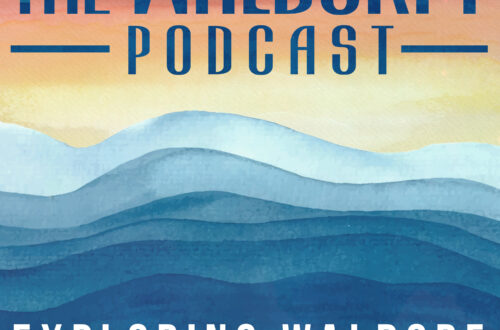Media & Screen Time: What’s the Waldorf Approach
What is the Waldorf approach to media and screen exposure?
It is, and has been for many years, a strong view that media and screen time should be limited to nothing for very young children and minimal for children in primary school. Although many Waldorf schools are understanding of the difficulty in creating such a limit in today’s world, this viewpoint has stayed fairly consistent.
In this episode my fantastic guest, David Sewell McCann and I explore this topic. As a story teller and former Waldorf teacher, David recognizes that early on it’s important to develop an image rich life. Through life experiences, hearing stories, and looking at picture books, a child’s imagination is developed. In the time that children are exposed to screens, be it TV or time on an iPad, young children are given images and pictures to see. While watching a screen, they don’t create images on their own with their imagination. In these instances children are simply not given the opportunity for their brains to fully develop their creativity and imagination in the same way. When I asked David how he thought this approach was formed, (since there was no TV around in Steiner’s day) , and why this approach has stuck around for so long, he related it so easily. “How does it make you feel?”, David says. I can totally observe this in myself. If I watch Netflix for an hour vs. read a book, I generally feel a lot better after reading a book. I love that he uses this practical observation to explain the Waldorf approach to screen time. (He goes more in depth in the episode of course.)
In addition we discuss how the kind of content on the screen does matter. David gives the example of Mr. Rogers. The pacing and gentle approach of the way Mr. Rogers delivered his show gave a very different feeling than a fast paced action packed cartoon. I bring up a recent study that looks at the effects of media and screen exposure on young children and it generally shows what the Waldorf community has been supporting for years, which is a very limited approach.
David goes on to talk about his own experience becoming a Waldorf teacher and then about Sparkle Stories. Sparkle Stories is an online source of over 1200 original stories all created by David. I was so excited David agreed to speak as a guest on this episode because what he offers through sparkle stories is really such a wonderful alternative to other children’s media. Sparkle stories have such a gentle pacing that is so so lovely to listen to, even as an adult. All the stories feature developmentally appropriate themes and topics designed to meet children where they’re at. (Sound familiar? Yes that’s also what Waldorf education does)
FOLLOW WALDORFY ON SOCIAL MEDIA!
Resources:
I think another concern that parents have is that limiting computer and tech use could cause their children to fall behind in some way. We didn’t actually address this in the episode, but I thought it was worth mentioning here. I really like this New York Times article talking about Silicon Valley executives who send their own children to Waldorf schools and support a limited media approach.
Here’s a link to that article.
David was an awesome guest on the show and I really hope you’ll check out Sparkle Stories and David’s new project How to Story.
I found this helpful course from fridabemighty.com I think it might be really helpful for families looking for a place to start to find a healthy relationship with screens.
Additional Notes from this episode:
Don't forget to check out Toy Making Magic. At the end of this episode I spoke with Toy Making Magic's founder, Jessica, all about the Waldorf toy making tutorials she's creating.
To get 50% off your first month of Toy Making Magic use coupon code: WALDORFY at check out.
